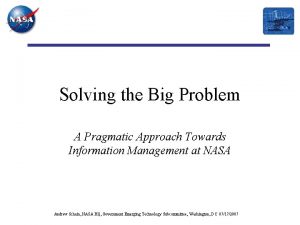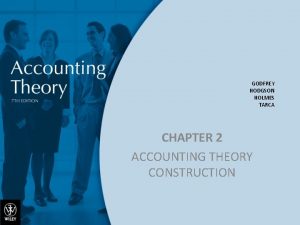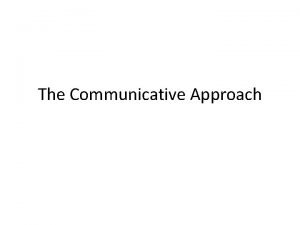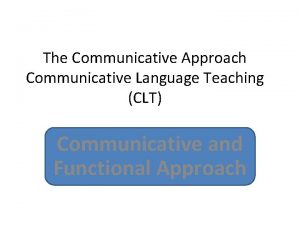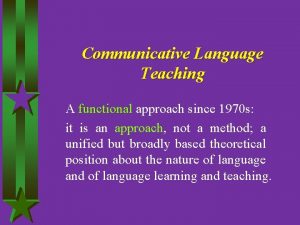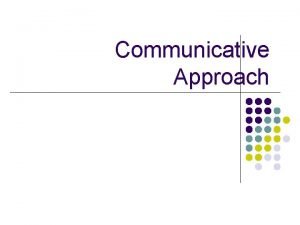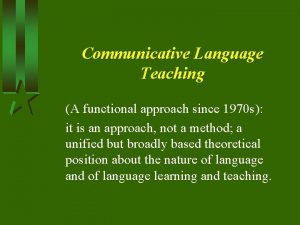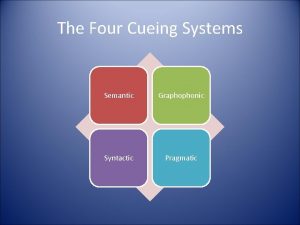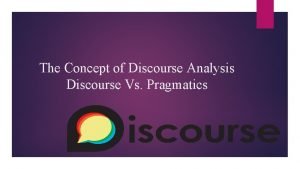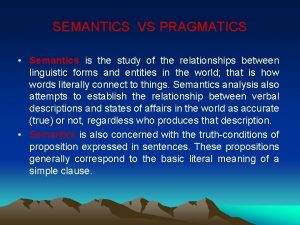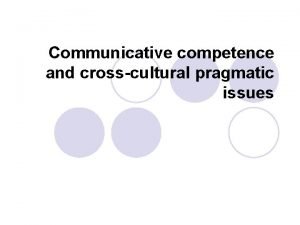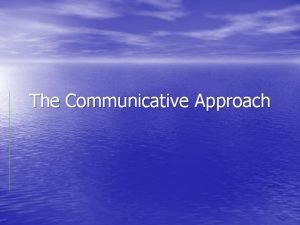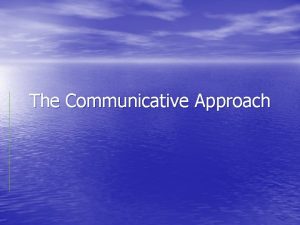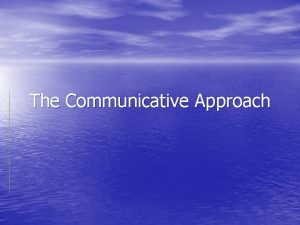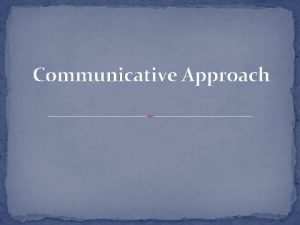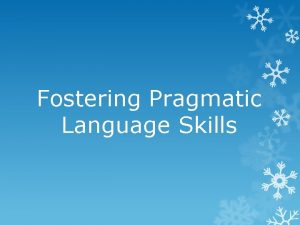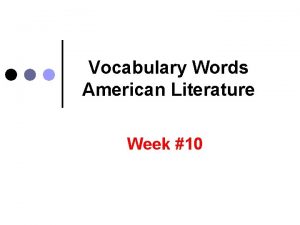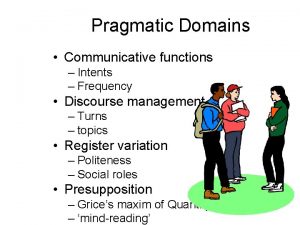A PRAGMATIC STUDY ON APPLYING COMMUNICATIVE APPROACH IN












- Slides: 12

A PRAGMATIC STUDY ON APPLYING COMMUNICATIVE APPROACH IN CONSECUTIVE INTERPRETING COURSES Hui-Wen Chen Assistant Professor, Department of Translation and Interpretation Studies Chang Jung Christian University

INTRODUCTION • Insufficient English listening and speaking abilities • Teaching objective – Enhance their basic English listening comprehension – The transference skills from English (foreign language) to Chinese (mother language).

RESEARCH QUESTIONS • Instructor’s reflection and pragmatic study • To investigate – Teaching concept based on constructivism – Teaching approach based on communicative teaching • To explore advantages and disadvantages of the instructor’s teaching method • To provide suggestions for teachers

SUBJECTS • Participants: 133 Translation and Interpretation Studies major sophomores • Including 15 repeaters, 2 minors, 2 transfer students, and 2 returning students who went abroad for 1 -year exchange program • Numbers for each class: 42, 35, 27, and 29 • Pre-took a two-semester required course Basic Chinese-English Translation in the 1 st year

COURSE • • • One-semester course Required course Once a week, two periods Consisting of 15 weeks, 30 periods Textbook: World English 2: Real People, Real Places, Real Language (Johannsen & Chase, 2010), National Geographic

CLASS ACTIVITIES • Summary exercises • Consecutive interpretation • Closed platform on website

EVALUATION OF PERFORMANCE • Use of “Encouraging Stamps” (ES) and “Encouraging Cards” (EC) • Observation of teaching assistant • Instructor’s remarks • Others

RESULTS AND DISCUSSION • Instructor’s Observation and Reflection Note • Students’ Evaluation on the Course

STUDENTS’ EVALUATION OF THE COURSE Teaching Strategy Course Design Class Manage ment Selfevaluation Method of Evaluation

CONCLUSION AND LIMITATION • ECs provided direct and immediate feedback to students • ESs facilitated students to: – Correct their mistakes – Learn how to interpret more precisely and ideally – The technique of gist summary

CONCLUSION AND LIMITATION (cont. ) • Role of the TA – Guided and consulted for the students – Applied collaborative learning approach – Supervised learning progress optimally • In a communicative teaching approach: – Students were the main speakers in class – Instructor was merely a beholder and facilitator • Gist summary at the beginning 10 minutes – Facilitated students to come to class on time – Enhanced their class attendance rate – Improved students’ skills in extracting gist and paraphrasing

CONCLUSION AND LIMITATION (cont. ) • The majority of students confirmed the communicative teaching approach used in the course • Although the course lasted only one semester, the subjects observed in this study encompassed the whole range of sophomores of the year • The results may be used as reference for design of course activities and method of evaluation
 Pragmatic approach to problem solving
Pragmatic approach to problem solving Pragmatic approach in accounting theory
Pragmatic approach in accounting theory What is the communicative approach?
What is the communicative approach? Examples of communicative approach activities
Examples of communicative approach activities Communicative language teaching
Communicative language teaching Goals of communicative language teaching
Goals of communicative language teaching Functional communicative approach
Functional communicative approach Applying agile approach in erp implementation
Applying agile approach in erp implementation 12 types of love
12 types of love Graphophonic meaning
Graphophonic meaning Pragmatics discourse
Pragmatics discourse Difference between semantics and pragmatics
Difference between semantics and pragmatics Locutionary illocutionary and perlocutionary acts examples
Locutionary illocutionary and perlocutionary acts examples
